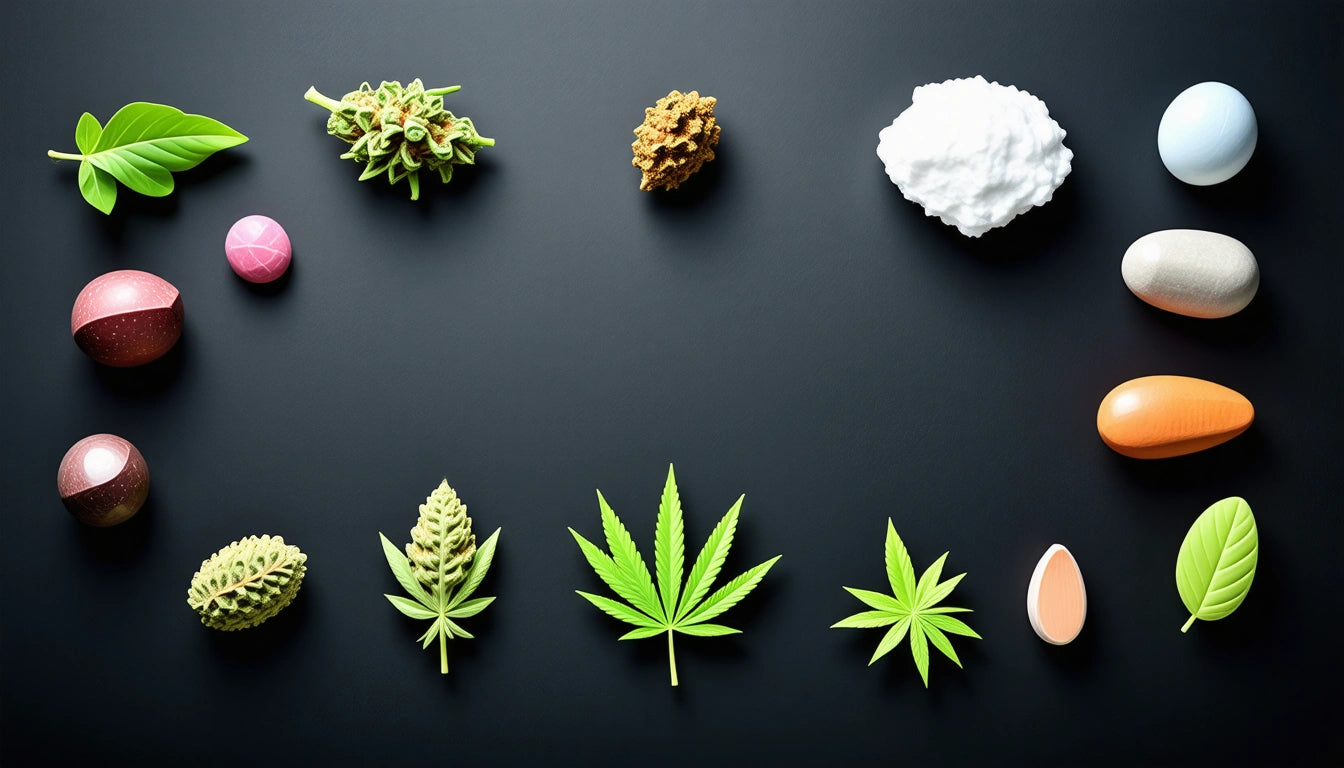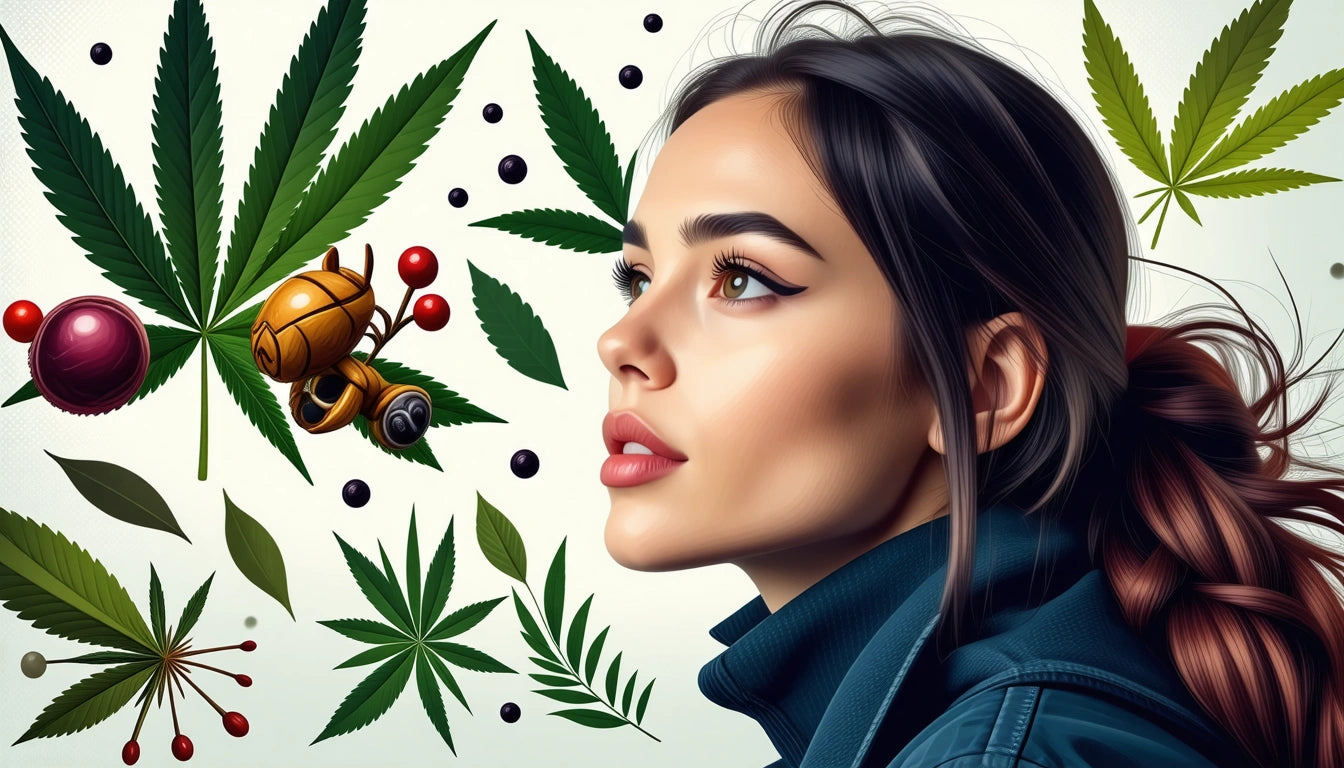Table of Contents
Understanding Sativa: Effects, Benefits, and Usage
Sativa cannabis strains have gained popularity for their energizing and uplifting effects. Understanding what sativa is and what sativa does to you can help consumers make informed choices about cannabis consumption. This comprehensive guide explores sativa's characteristics, effects, benefits, and optimal usage scenarios.
What is Sativa: Origins and Characteristics
Sativa cannabis originated in hot, dry climates with long sunny days, primarily near the equator in countries like Thailand, Mexico, and Colombia. These environmental conditions influenced the plant's distinctive physical characteristics.
Physical Appearance
When wondering what does a sativa plant look like, there are several distinguishing features:
- Tall, lanky growth pattern often reaching 12+ feet in height
- Narrow, finger-like leaves with light green coloration
- Longer flowering cycles (10-16 weeks)
- Less dense, more airy bud structure
- Higher calyx-to-leaf ratio compared to indica varieties
The question of what color is sativa is commonly asked. While the plants typically display lighter green foliage than indicas, the flowers can range from bright green to gold, sometimes with orange or red pistils.
Sativa Effects on Body and Mind
Many consumers ask, "What does sativa do to you?" or "How does sativa make you feel?" The effects are primarily cerebral and energizing.
Typical effects include:
- Energetic, uplifting sensation
- Enhanced creativity and focus
- Stimulation of mental activity
- Reduced anxiety (in appropriate doses)
- Mood elevation and euphoria
When considering what does sativa feel like, most users report a "head high" rather than a body-focused experience. This makes sativa varieties popular for daytime use when productivity is desired. For precise dosing, many consumers use accurate digital scales to measure their cannabis and achieve consistent effects.
Benefits and Medical Uses of Sativa
Understanding what is sativa used for helps consumers select the right strain for their needs. Sativa strains offer several therapeutic benefits, including:
Medical Applications
- Mood disorders: May help with depression and seasonal affective disorder
- Focus issues: Potentially beneficial for ADHD symptoms
- Fatigue: Can combat chronic fatigue and low energy
- Appetite stimulation: Helps with eating disorders or medication side effects
Does sativa help with inflammation? Research suggests that some sativa strains with specific cannabinoid and terpene profiles may offer anti-inflammatory properties, though individual results vary based on the specific strain and a person's unique endocannabinoid system.
Top Sativa Strains for Energy and Creativity
When looking for the best sativa strains, consider these popular options known for their energizing effects:
- Jack Herer: Named after the cannabis activist, known for creativity boost
- Durban Poison: Pure sativa with energetic, uplifting effects
- Green Crack: Despite the name, prized for focus and mental stimulation
- Sour Diesel: Energizing effects with stress-relieving properties
- Strawberry Cough: Sweet flavor with anxiety-reducing effects
Discovering the best sativas for your needs often requires some experimentation, as individual body chemistry affects how each strain works for you.
Consumption Methods and Dosage
Understanding what sativa weed does requires knowledge of different consumption methods, as each affects onset time, duration, and intensity.
Common Consumption Methods
- Smoking: Fast onset (5-10 minutes), effects last 2-3 hours
- Vaping: What is sativa vape? It's the heated oil or flower that produces vapor rather than smoke, with similar timing to smoking but potentially fewer respiratory irritants
- Edibles: Slower onset (30-90 minutes), longer duration (4-8 hours), more intense effects
- Tinctures: Moderate onset (15-45 minutes), medium duration (3-4 hours)
How long does sativa last? Typically, the effects peak within 30 minutes to 2 hours after consumption and may last from 2-8 hours depending on the method, dosage, and individual metabolism.
Sativa vs. Indica: Key Differences
When comparing sativa and indica strains, several key differences emerge in effects, appearance, and use cases.
The differences between sativa and indica include:
- Effects: Sativa tends to be energizing and cerebral, while indica is typically relaxing and sedating
- Appearance: Sativa plants are taller with narrow leaves; indica plants are shorter with broader leaves
- Growing: Sativa has longer flowering periods; indica matures more quickly
- Use timing: Sativa is often preferred for daytime; indica for evening
When to harvest sativa plants is crucial for potency and effect profile. Most growers harvest when 70-90% of pistils have darkened and trichomes are mostly cloudy, which typically takes 10-16 weeks of flowering.
Practical Usage Tips for Optimal Experience
To get the most from sativa strains, consider these practical recommendations:
- Start with low doses, especially if you're sensitive to THC or prone to anxiety
- Morning or early afternoon use maximizes the energizing benefits
- Pair with creative activities or social gatherings to enhance the experience
- Stay hydrated to minimize side effects like dry mouth
- Consider terpene profiles when selecting strains for specific effects
Does sativa make your eyes red? Yes, like most cannabis varieties, sativa can cause red eyes due to THC's ability to dilate blood vessels. Staying hydrated and using eye drops can help minimize this effect.
How long does sativa stay in your system? THC from sativa strains can be detected in urine for 3-30 days depending on frequency of use, metabolism, and body composition. For occasional users, it typically clears within 3-7 days.
Comparing effects between strains can help you develop a personalized understanding of how different varieties work for your specific needs and body chemistry.











Leave a comment
All comments are moderated before being published.
This site is protected by hCaptcha and the hCaptcha Privacy Policy and Terms of Service apply.